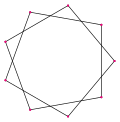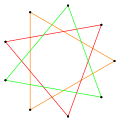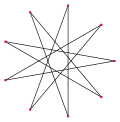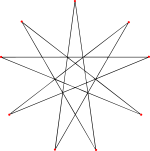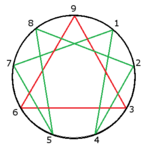| Enneagram | |
|---|---|
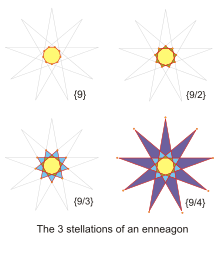 Enneagrams shown as sequential stellations | |
| Edges and vertices | 9 |
| Symmetry group | Dihedral (D9) |
| Internal angle (degrees) | 100° {9/2} 20° {9/4} |
| Star polygons |
|---|
|
|
In geometry, an enneagram (🟙 U+1F7D9) is a nine-pointed plane figure. It is sometimes called a nonagram, nonangle, or enneagon.[1]
The word 'enneagram' combines the numeral prefix ennea- with the Greek suffix -gram. The gram suffix derives from γραμμῆ (grammē) meaning a line.[2]

